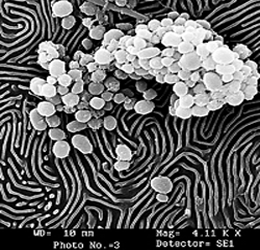Ultramicrotome Sectioning
ULTRAMICROTOMY
1 Trimming of blocks
Blocks are trimmed to produce a pyramidal shape at the tip of the block where the tissue is located. This can be done either manually or mechanically. Manually it is done by fixing the block into the holder. After mounting it on to the microtome, the four sides and the tip of the block are trimmed with a clean razor blade. While trimming the following points are considered:
· Trim as small as possible
· Do not trim sides of the pyramid too steeply as this reduces the stability
· If possible, trim away all free embedding medium
· Pyramid should be flat and free from plastic debris
· Trim the cutting surface of the block in the shape of a trapezium (⌂) to get serial sections easily.
The trimmed block is fitted in the block holder of the ultramicrotome. patek philippe replica watches
2 Making glass knives
For sectioning, diamond or glass knives are used. Diamond knives, though expensive, produce very good quality sections. Most laboratories use glass knives, which are less expensive.
For making glass knives, usually Belgium glass strips are used. These are first cleaned with acetone to remove any traces of grease. Using a knife maker, glass strips (1, see figure below) are cut into squares (2) and then each square (3) is cut diagonally into two triangles (4). Knives with regular, sharp edges (5) are chosen for sectioning. Glass knives are stored in a dust free container and used within 1-2 days of their making.
3 Filling the boat
To allow sections to be cut without sticking to the knife-edge, a trough (boat) is placed behind the edge. This is filled with water for collecting sections. The boat is either made from tape or from thin metal. It should end at the same height as the knife-edge. To make the boat water tight, the lower part of the boat with the knife is sealed with nail polish.
4 Preparation of semithin sections for light microscopy (Survey Sections)
Before one proceeds with ultrathin sectioning, thick sections (0.5-1.0 mm) are cut for viewing the tissue under an LM. This enables us to determine the quality of fixation, selection of the area for ultrathin sectioning and the size and position of the cutting face for final trimming.
The semithin sections, which are floated in water or 10% acetone, are lifted with a glass-rod or a thin brush and placed on a clean glass slide containing a drop of water. The slide is placed on a hot plate at about 80o C and dried. Methylene blue, azure II and toluidine blue are some of the commonly used stains, which are prepared as follows:
· The stain is prepared by mixing 1% dye in 1% borax solution (1:1 ratio).
· Stain sections for 0.5 to 1.0 min (depending on the thickness). Wash in running water and then in distilled water. Dry and mount with resin and polymerise.
· Observe under an LM.
5 Preparation of ultrathin sections: After scanning the sections under LM, the area to be examined under the TEM is selected and the blocks are further trimmed. Use fresh glass knife for cutting sections. Ultrathin sections show interference colours while floating on the liquid of the knife-boat. This allows determining the thickness of the sections.
Silver: 60-90 nm; ideal for most purpose
Gold: 90-150 nm; useful for low magnification
Purple, blue, green, and yellow (150 to 300 nm) are very thick sections and not suitable for TEM.
Ultrathin sections floating on the water are stretched by exposing them to chloroform. The sections are lifted from below on grids. Copper Grids, available as meshed (100-300 mesh) or with slots are commonly used. One of the surfaces of the grid is shiny and the other is matted. The sections are lifted onto the matted surface of the grid, allowing them to stick firmly.
If grids of large mesh size are used, a coating of film is done on the matted surface of the grid to render support to sections. Coated grids are useful for supporting particulate specimens like viruses and bacteria.
Uranyl acetate:Prepare a saturated solution by adding excess uranyl acetate to 10 ml of filtered 50% ethanol in a centrifuge tube. Shake vigorously for 2 min and spin down excess uranyl acetate. The solution is ready for use. Stopper and store at 4o C.
7 Staining procedure: Filter or centrifuge the stains before use. Pipette out about 50 µl of uranyl acetate in a droplet on a piece of parafilm kept inside a petridish. Float the grid upon the stain droplet with its section side facing down. Place first the petridish cover, and then one dark cover upon it, as the staining is effective when carried out in dark. Stain for 10-15 mins. Take each grid and wash twice in each of 50% ethanol and double distilled water with continuous agitation. Dry carefully on a filter paper.

